Traditionally, people look around the area to be planted to see what works well. Because of climate change, the type of tree will change and we will see more of what we currently consider Mediterranean. The best seeds to collect seem to be Beech, Pedunculate Oak, Sweet Chestnut, Wild Cherry, Aspen and Norway Maple, but the needs of biodiversity mean that some others are needed.
Seeds need to be collected at the right time, too early and they might be poor quality or not germinate, too late and wildlife might eat them. So wait until the seeds are ripe, or preferably have fallen, but do not leave it too long, squirrels take a lot.
Collect as much as you can. You can then either plant a lot, give them to us (via the Contact Us page) or plant some and give some. One year’s collecting provides the entire stock for a year.
As you go on walks, make notes of what is growing and where and decide on your collection. Beech, oak and sweet chestnut are easy and so is silver birch. Silver birch are often known as starter trees because they often establish a wood in which other trees then grow.
Beech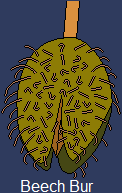
Beech trees are fairly easy to identify because of their characteristic thin branches and smooth light grey bark. If you watch for the burs, spiky fruit designed to throw the seed, you can find the nuts soon after ejections. If you root around in the litter (largely fallen leaves) around the tree, you will often find seeds under the surface. Burs often fall to the ground before opening, so pick them up and wait for them to dry and open. At this point you will be in competition with the squirrels!
grey bark. If you watch for the burs, spiky fruit designed to throw the seed, you can find the nuts soon after ejections. If you root around in the litter (largely fallen leaves) around the tree, you will often find seeds under the surface. Burs often fall to the ground before opening, so pick them up and wait for them to dry and open. At this point you will be in competition with the squirrels!
Oak
Oak trees are easy to spot because of their distinctive leaves. In the autumn the tree drops acorns, sometimes in huge numbers, or if a lot fell last year then maybe not at all. English (Pedunculate) oaks have acorn cups on stems, not directly on the branches.


If the acorns are on private land, you will need to ask the land owner for permission. Note where oak trees are – it might be helpful to have a written record to collect methodically
Note when acorns begin falling. You only want brown acorns that have fallen and the first to fall will probably be immature. You want those that fall two weeks later, but don’t leave it too long, you will be in competition with hungry squirrels.
Don’t store the acorns in plastic containers. Check for viability by throwing them in a bucket of water. Discard those that float. Then plant the others (sideways) in compost, where rodents cannot get at them.
Sweet Chestnut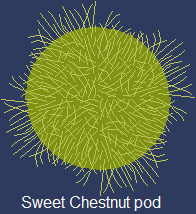
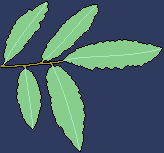
The sweet chestnut has leaves about four times as long as they are wide. The leaves are arranged alternately along the shoot or twig. The leaves are long (up to 20cm in mature trees). The seed pods are like tennis balls made of green spikes. Use gloves to pick them up.
You can either wait for them to split open, or open them. The nuts you want are the fat ones. If any have a convex surface, don’t use them as they won’t germinate. If you can, plant them as soon as they come out of the pods.
Wild Cherry
There are different types of cherry. The wild cherry has cherries on long stalks. The cherries ripen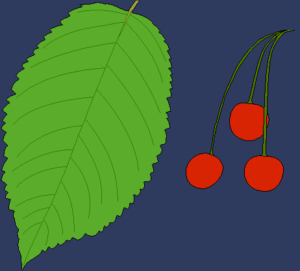 and fall quite early in the year, perhaps mid-July so you will have to watch the trees. You don’t want to waste time with immature fruit which is not going to germinate, so wait until the cherries are orange-red and fall. Many will become hooked up on undergrowth – these are the ones you want. Put them in water when you get home to stop them drying out and going dormant. Remove the fruit and put the stones back in water. If the stones float, don’t use them – they are probably immature.
and fall quite early in the year, perhaps mid-July so you will have to watch the trees. You don’t want to waste time with immature fruit which is not going to germinate, so wait until the cherries are orange-red and fall. Many will become hooked up on undergrowth – these are the ones you want. Put them in water when you get home to stop them drying out and going dormant. Remove the fruit and put the stones back in water. If the stones float, don’t use them – they are probably immature.
Norway Maple
You might need to differentiate between Norway Maple, Sycamore (sometimes called “sycamore maple”) and Field Maple. The leaf of the Norway Maple is similar to that of the Sycamore, but the Norway Maple’s leaf edges are not serrated (those of sycamore are – like a saw blade) and veins look lighter than the rest of the leaf (the veins of sycamore are darker than the rest of the leaf). The leaves of both Norway Maple and Sycamore are pointed whereas the leaves of Field Maple are rounded.


Aspen
Growing Aspen from seed is not easy. Trees for Life (https://treesforlife.org.uk/) suggest that the following might help:
Collection timing is important in order to collect the seed when it is ready but before it blows away. Collect catkins when the white down just starts to appear (April or May). Leave the catkins to “fluff-up” for a couple of days in the warm, e.g. on a windowsill in the sun.
Separate the seeds from the white down – this can be done by placing the catkins in a container with holes in the base just a bit larger than the size of the seeds. Agitate the catkins by spinning a piece of stiff wire in an electric drill and the down will be left in the container whilst the seeds fall through the holes in the base.
Sow the seeds immediately as they are likely to lose their viability rapidly if stored.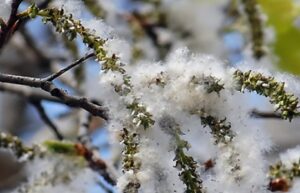
Seedlings are likely to be very susceptible to heat, wet, drought and damping-off fungi. Therefore seeds should be sown very thinly on the surface of moist compost and kept shaded from strong sun, protected from rain and misted with a hand-mister to prevent drying out.
Germination is likely to occur rapidly, within a few days of sowing. Seedlings will need to be very slowly acclimatised to normal outdoor conditions.
If sown thinly enough, seedlings can be left in their seed tray for the first growing season, and then pricked out into pots or a nursery bed the following spring.
If the acorns are on private land, you will need to ask the land owner for permission. Note where oak trees are – it might be helpful to have a written record to collect methodically
Note when acorns begin falling. You only want brown acorns that have fallen and the first to fall will probably be immature. You want those that fall two weeks later, but don’t leave it too long, you will be in competition with hungry squirrels.
Don’t store the acorns in plastic containers. Check for viability by throwing them in a bucket of water. Discard those that float. Then plant the others (sideways) in compost, where rodents cannot get at them.